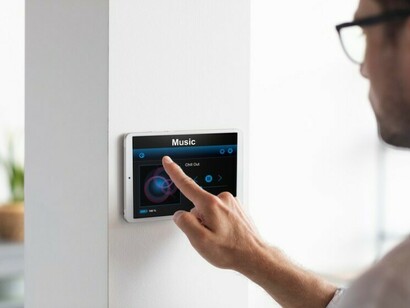Consider if your office could tell that you were losing focus and adjusted the lighting to revive you. Or if your home could notice tension in your body and muted its acoustics and temperature to relax you. This is the new universe of brain-sensitive design—a union of neuroscience, AI, biometric monitoring, and adaptive systems that has the potential to redefine our relationship with the built environment.
This is no longer science fiction, but it is a logical consequence of the increasingly solid foundation of neuroarchitecture, the multi-disciplinary research on the way architecture affects the human brain and behavior. As neuroscience is an ever more profound understanding and technology is more ingrained in spatial construction, buildings are already on their way to becoming not only smart—but feeling.
Traditional architecture has always played a role in shaping behavior indirectly: cathedral ceilings provoked awe, open squares encouraged social interaction, windowless rooms reduced concentration. But these effects have been mainly static, preprogrammed into materiality. The future of neuroarchitecture breaks this static model to dynamic space—space that reacts in real-time to our shifting psychological and physiological conditions.
Brain-responsive design utilizes biometric inputs such as heart rate variability, EEG, eye movement, posture, and voice tone to decide states of the user. These data streams can be utilized to operate environmental systems through machine learning to adjust in return:
Lighting can shift color temperature and intensity to support circadian rhythms or improve concentration.
Soundscapes can adjust to reduce noise-driven tension or promote relaxation.
Climate control can adjust temperature and airflow based on emotional feedback.
Spatial configurations can subliminally change—through movable partitions, AR projections, or touch interfaces—to meet cognitive needs like privacy, collaboration, or relaxation.
Not science fiction—it's already under development in test buildings, art pieces, and adaptive health-and-performance spaces.
Enabling technologies
Several technologies are converging to make brain-responsive architecture possible:
Wearable biometric sensors: smart watches, EEG headbands, and posture sensors can monitor real-time mental state, fatigue, and stress information.
Integrated environmental sensors: sensors within the built environment track air quality, light, sound pressure, and pedestrian movement.
Artificial intelligence: machine learning algorithms interpret user data and predict requirements so proactive spatial adjustment becomes feasible.
Adaptive building systems: kinetic facades, intelligent lighting, module interiors, and ambient computing interfaces are a few examples that can adapt to AI-informed inputs.
Neurofeedback interfaces: systems that respond not only to individuals but provide feedback loops—helping them recognize and control their own internal states.
All of these tools build a responsive architecture which is both reactive and anticipatory—architectural empathy.
Uses across typologies
Brain-responsive architecture could potentially transform numerous domains:
Offices would improve creativity, reduce burnout, and customize conditions for neurodiverse employees.
Hospitals might assist in healing by adjusting stimuli to patient states, reducing anxiety and inducing rest.
Schools could offer students with tailored learning spaces that adapt to attention, concentration, or fatigue.
Residential buildings could be wellness retreats, sensing the mental load of inhabitants and helping recovery.
Public buildings—museums, airports, transportation hubs—could reduce cognitive overload and provide navigational simplicity.
Ethical and cultural issues
While the promise of brain-sensitive buildings is compelling, it raises subtle ethical questions:
Privacy: who owns the biometric data? How is it gathered and used?
Consent: are individuals well-informed and in control of how buildings react to them?
Equity: will such systems become exclusive to high-end developments or tech-savvy customers?
Cultural perception: how will different cultures perceive and embrace such responsive spaces?
Architects and designers need to collaborate with ethicists, neuroscientists, and policymakers to ensure such a new frontier is respectful, inclusive, and transparent.
A new role for architects
In this new era, architects become experienced designers in the truest sense. Rather than creating one-off spatial solutions, they will create adaptive ecosystems, working together with data scientists, interface designers, and cognitive researchers. The blueprint is no longer a terminal document but a dynamic framework.
Brain-reactive building design will also shift from user averages to variability. Neurodiversity, routines, and context-dependent needs will be the drivers of design. The built environment thus shifts from universal neutrality to hyper-personalized empathy.
Conclusion
The future of neuroarchitecture is not merely intelligent buildings—it's emotionally intelligent space that understands us and makes us better. There are numerous challenges yet to be overcome, but the overlap of neuroscience, technology, and design is poised to define spaces that nourish our minds, bodies, and hearts. In this vision, the building is no longer a static shell but an active participant in our human story, shaping and shaped by our ever-evolving brains.















